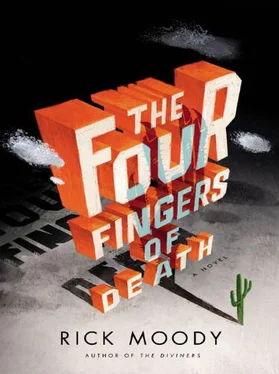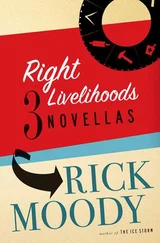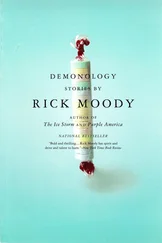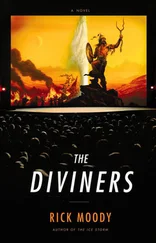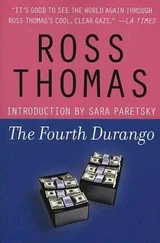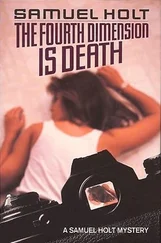Because earthlings really weren’t built for space travel, what went up would come down. Would come down. Because all the systems of rocketry, the advanced engineering, the physics, the computer calibrations, when you considered them, just decorated what were in the first place large incendiary devices. Combustion for good or ill. A big, unused oxygen tank sitting one reinforced wall away from a nuclear reactor could at high temperatures be made into fuel if you knew a little bit about engineering. A man bent on self-slaughter will in time find the way to effect his passing.
And what was the furnace of that explosion like? The furnace of that explosion was like all great light shows. If your planetarium remains open in these times of endless night, then you are lucky, but, if not, perhaps you remember going to the planetarium in days past, in order to smoke various controlled substances and to listen to the thunder of the genre known as dead girlfriend , while the lasers etched out their predictable patterns above. Would you require another manifestation of the light show? While it is true that all fireworks displays resemble all other fireworks displays, especially those mounted in hard-luck small towns, there is still something earnest and generous about these fireworks displays, because they are the light of munitions put to good use, the light of munitions tamed. How else might this light of munitions be used? This light might be used for ill, as in the carpet-bombing of Central Asian cities by computer-controlled drones. This conflagration illuminates the night in a startling way, but is that what you want lighting your pockmarked highways and your blown bridges? It’s a transient light, as all exploding things are transient, unless perhaps your explosion is of the nuclear sort, fission or fusion, of which only eleven have ever been exploded above ground in combat, and the most recent of these of a very modest sort, with deaths only in the tens of thousands. And while there are all kinds of treaties preventing this particular kind of light, nuclear fission, it continues to persist, even to proliferate, likewise the unpleasant suntan that goes with it, as well as the thyroid tumors and the relentless nightmares. What is the best of all kinds of light? Well, the best of all the varieties of light, since you ask, is the so-called Big Bang, coming from the perturbance within (and upon) an infinitely hot and dense speck that exists in what can only be referred to as the Nothingness or otherwise as the Time Before. This something in the middle of the Nothingness, this infinitely hot and dense singularity, because of a perturbance within and without, experiences some kind of rapid transformation at incalculably hot temperatures, and it commences the transition from infinitely dense to something quite a bit larger and more diffuse, and this light, which is, as far as we know, the light that has in turn generated all other light, it flings material far into its recesses and emptinesses, which open up in all directions, and some of this material, this gas and matter, begins to coalesce into constituent lights, which are themselves imitations of the originary light, the expanding and expansive light, as all lights are fragmentary and pale imitations of some preliminary light, and around these lights spheroids begin to accumulate, some of them rocky, some of them icy, some of them gaseous, some of them possessed of spectacular rings, but it should be noted that all these nightlights, scattered, as they say, like grains of sand across what is, these are all imitative, and not terribly successful as such, but their light is adequate, in millions upon millions of cases, to permit the kinds of chemical processes that bring about organic compounds. What these orbiting spheroids require, when life is present, is light itself , and all light has a backwardly gazing tonality to it, recalling, as it does, the originary light, and so despite the fact that great destructive force necessarily occasions light, any kind of light is nonetheless the sign that some kind of something is mitigating or flying in the face of the much more frequent and much more permanent Nothingness.
And so the explosion in the sky over the American Southwest was light , was continuous with the history of light as shown above, and light can’t be bad, and light involves the transmutation of some kind of energy into some other kind of energy, and there is poetry to this, but occasionally there is also tragedy, at least if, for example, you were watching the light from the ground, if you were well-informed enough to know that you needed to be watching, or if you were one of the people in the desert of the Southwest who happened to be looking up at the sky, or who had a telescope or very good binoculars, or who just knew what was going on, you might have thought of this turn of events as tragic, but properly considered it was just another example of light as a celebration of not-darkness, and in this case, perhaps there could be plenty of good involved, because a badly contagious astronaut was going to be obliterated in this particular light show, as well as most of the metal casing in which he was housed at the time of the explosion, and this was good, from a public-health perspective, as were the extraordinarily violent temperature extremes that were involved in the reentry of the ERV; these could be responsible for killing off potentially lethal infectious agents, referred to in some circles as military weapons systems.
The only outstanding question, when the explosion was considered as a field of possibilities upon which one might, for example, wager, if one were part of a national gambling syndicate that gambled on the outcomes of political events and natural disasters, was: whether the ERV was high enough in its flight path to be completely incinerated or blown apart in the upper atmosphere, as was to be hoped. Because a large, far-flung trail of debris would constitute a civic emergency, not to mention a national security problem, even more so if, as appeared to be the case, the debris field included large portions of a sovereign NAFTA cosignatory that was, nonetheless, trying to minimize border incursions from the North.
The staff at NASA was monitoring the path of the ERV very carefully and they were satisfied, until the last moment, that it was on a northwesterly course to make a reasonable splashdown in the North Atlantic. A splashdown, though long outmoded in the landing protocols of a NASA that was now smaller and more efficient, allowed NASA the resources to go to the planet Mars itself and to avoid building wings onto the ERV. With splashdown, you could design a very simple reentry craft, and it could be kept away from population centers for a time. But NASA, or the better part of NASA (except for one middle manager who was at the moment of the explosion on his way down the corridor to liberate the one returning astronaut, Colonel Jed Richards, by toggling the auto-destruct emergency switch), was well into a collective delusion about the ERV, and into the midst of their shared delusion came a scrim of bright white fuzz on the screens that depicted the craft itself, and this white fuzz was followed by instantaneous blackness, which was followed by an absence of radio transmission, and, according to radar that tracked the craft, a multitude of pieces of the ERV, instead of one large, easily tracked ERV, rained across the screen, and many of these pieces vanished in front of the personnel manning the radar, until there were only a few minor bits of the ERV that were capable of being tracked, and these were falling out of the sky at the usual accelerating rate of thirty-two feet per second per second.
There was no device manufactured by the Jet Propulsion Laboratory that could track, from the ground, the remaining mind of Colonel Jed Richards. While there were devices that could, and did, track his heart rate, his blood pressure, his galvanic skin response, brain activity, temperature, even the condition of his bowels (not very good), these devices were useless after the advent of the explosion. If it were possible to track the mind of Richards, what would NASA have learned? In the explosion, the last of Richards’s mind, however it was able to operate, was lost, and with it all the details of the way in which Colonel Jed Richards effected his departure from this world. Did he use some inflammatory device, like the onboard welder, to blow up the liquid oxygen reserves and therefore likewise to ignite some of the solid fuel that remained, which was meant to effect a few gentle booster firings if necessary? These things would long be unknown, despite a blue-ribbon commission that was soon to be put into motion.
Читать дальше
